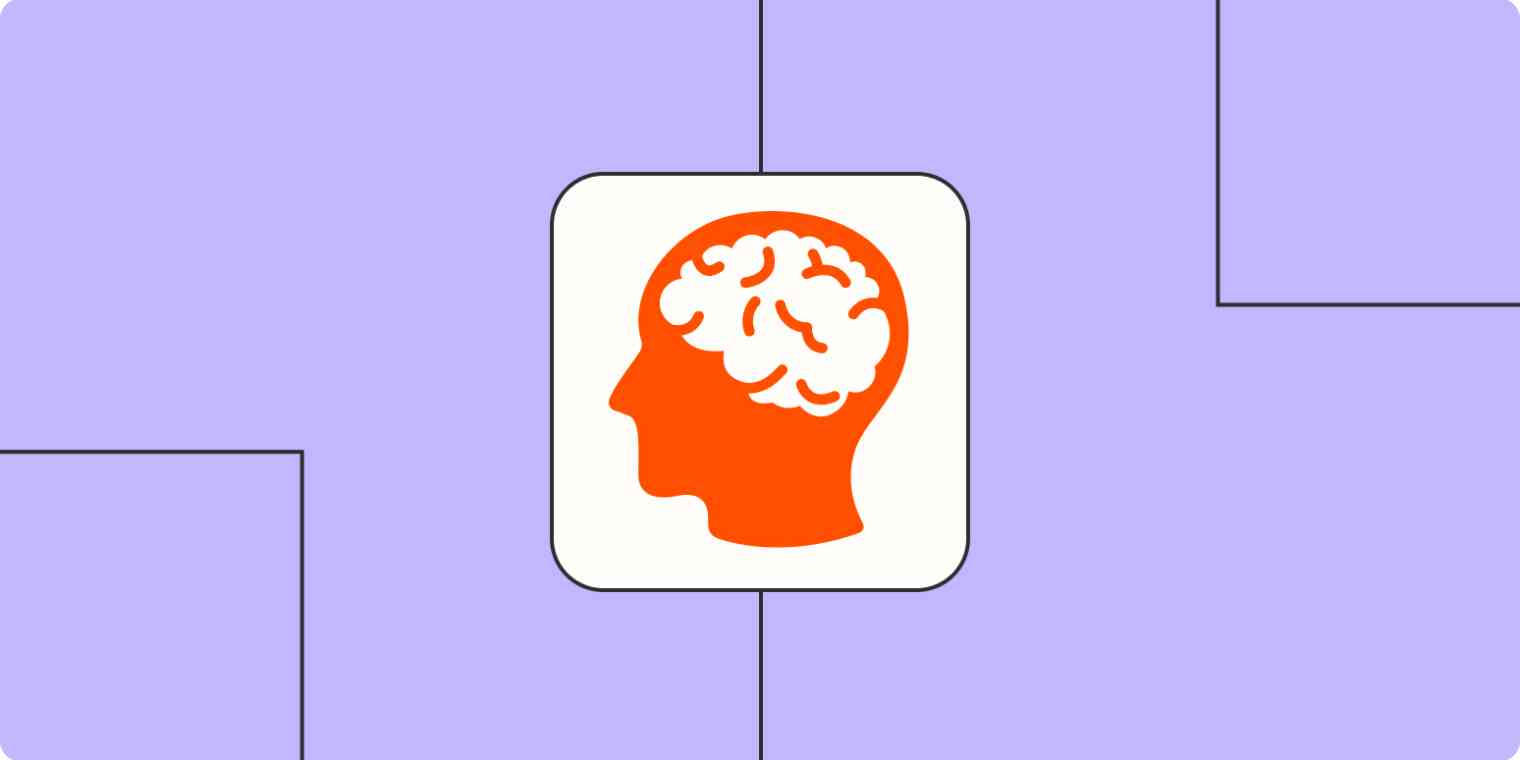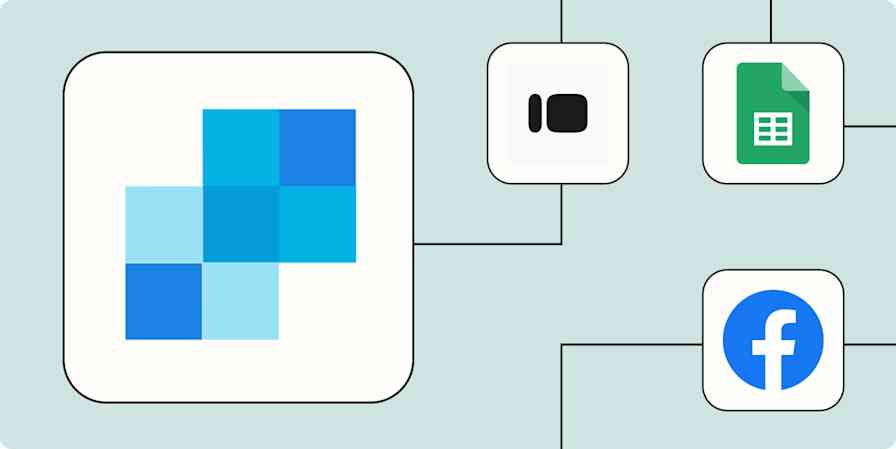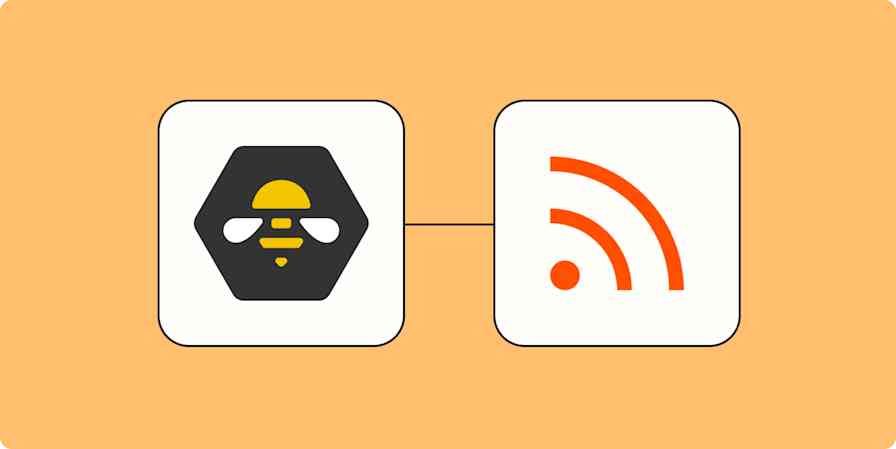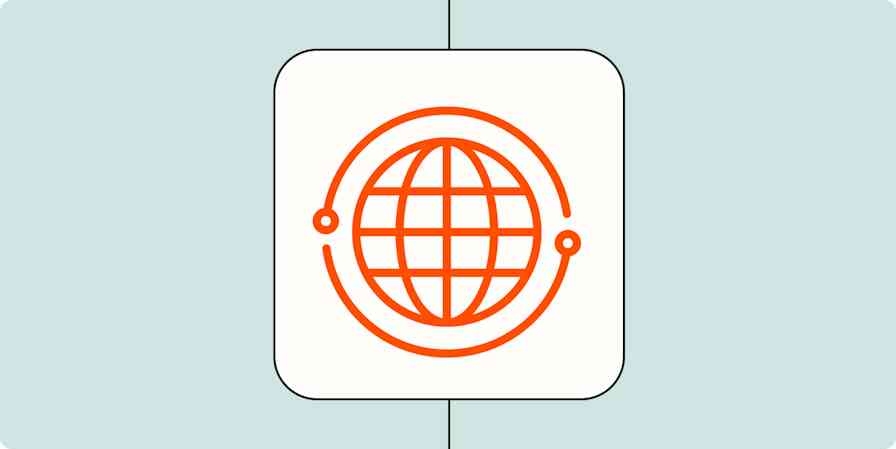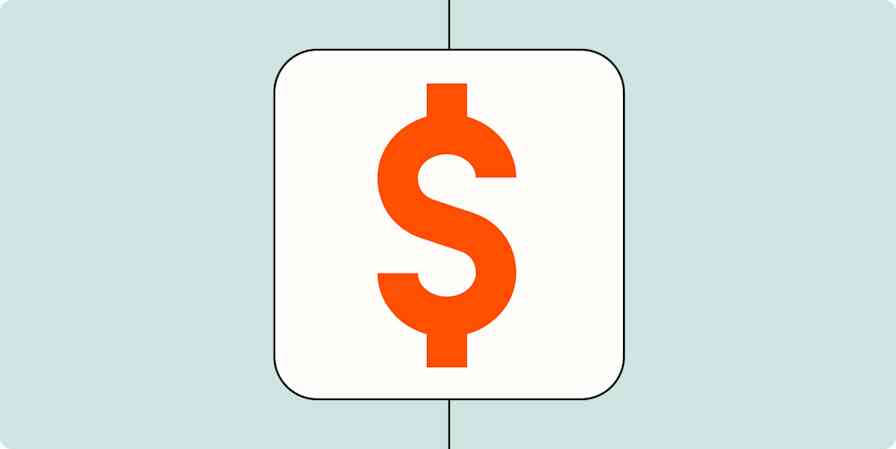Last year, I learned that I'm neurodivergent—someone who experiences, interprets, and interacts with the world differently due to a neurological condition like autism spectrum disorder (ASD), dyslexia, or ADHD.
Though I got a late start on working with my ADHD, I quickly realized the tightrope neurodivergent people have to balance. We have to meet neurotypical standards, like prioritizing work or time management, in a way that makes sense to our brains. It's like trying to screw in a light bulb with different wiring and you don't know the wattage. The light bulb might have enough power to light the lamp…or it can have too much, blow the fuse, and start an electrical fire.
I'm not an electrician, but I've spent a lot of time recently trying to figure out how to adjust my work environment so I can excel. (The results can vary.) But some of my neurodiverse coworkers at Zapier have been at it longer than me, so I turned to the experts to ask how they use Zaps—what we call our automated workflows—to support their brains.
Table of contents
Zapier is a no-code automation tool that lets you connect your apps into automated workflows, so that every person and every business can move forward at growth speed. Learn more about how it works.
There's no one-size-fits-all solution
Let me be clear: no one is suggesting that automation is a cure for any other condition under the neurodiversity umbrella. Go see your healthcare provider first. (And by the way, there is no "cure." We're different, and there's no problem with that!)
You have the brain you have, and it's mostly great…until it's not. And you've likely tried all the productivity hacks available. Eat the frog? Let's keep it as a pet because it's cute. The Eisenhower matrix? That's four decisions per task and 40 possible options for my to-do list, which is already 20 decisions beyond my daily limit.
The point is that neurodiverse people tend to blow the fuse on typical productivity advice because it often forces us to try a strategy counter to our internal wiring and where our brains tend to shine.
But as the old saying goes, "if you've met one neurodiverse person, you've met one neurodiverse person." What works for one person with dyslexia may not work for another with the same condition. Automation can be a useful accommodation tool for designing systems that work the way we do. (And we love a good system.)
When to use automation as an accommodation tool
We've already talked about general guidelines for knowing when to automate a task. It's still solid advice, so we're not throwing out those best practices—or imposing different rules for neurodivergent individuals. (We may have shared attributes, but we're a spectrum too.)
Instead, think of this guidance as a starting point for thinking about your own cognitive needs.
When it's time to automate a task so you can thrive:
It's a recurring task you often forget—or can't do on your worst day
It's too difficult to start because it's boring, repetitive, or complex
It's a recurring task you still forget—or can't do on your worst day
You should automate tasks you have to do frequently or on a schedule. This is especially true if you know you'll forget to do them—or don't think you can complete them on your worst day.
You don't need to be neurodivergent to do this. But if you have a condition that affects your working memory, for example, you may find that automation can help clear the way for you to succeed.
My colleague Pedro uses automation to stay on top of paying bills that don't have autopay features.
"I need to send an email every month with the electricity meter count, which I easily forget," he says. "So I take a picture of the meter right from Google Drive, I name the file with meter count and month, and my Zap automatically sends an email with the photo, the date, the meter count, and any other placeholders."
There's no question that paying your bills on time is a high priority, but don't be afraid to automate routine tasks that may seem minor to other people—but get in your way.
For example, my team's workflow for publishing blog posts includes tagging an editor in our team Slack channel so an editor can review. It's small, requires little effort, and is extra insurance that someone can see it.
But those tiny tasks also drain my brain's battery. If I need to communicate something important that requires more thought—and I'm not having the best day—these smaller tasks can use up my battery before I get to these bigger to-dos. Then I'm less likely to communicate well or at all.
Instead, I automate sending those simple messages to my editors whenever I update an assignment status in our Airtable.
If it's a task that gets in the way on your worst days—no matter how large or small—it's worth automating.
Read more: How to automate your recurring tasks
It requires task-switching between apps
Automate anything that requires too much task-switching between apps. My coworker Jen likes to automate progress updates that take her too much outside of her focus "zone."
"I can get too fixated and too overwhelmed when I'm replying to tickets," Jen says. "Those quick updates can become an afterthought."
For example, she uses the Zapier Chrome extension to flag any customer tickets in Zendesk she wants to review later. She also uses Zaps to keep her calendar updated when her time off is approved in BambooHR.
Too much app-switching also makes it more likely that you'll miss something important. That's true for any person, but it can be even more of a struggle for neurodivergent individuals who may have a different threshold for task-switching.
For example, my friend Peter uses a series of Zaps to automatically update his Slack status and availability in his calendar.
"Otherwise, I'd have my calendar up all the time to make sure it's correct," he says, which distracts him from writing and analyzing.
Learn how to set up Zapier for Alfred and run Zaps from your Mac keyboard.
The task is too difficult to start because it's boring, repetitive, or complex
Neurodivergent people experience differences in executive function—cognitive skills that allow humans to plan, focus, meet demands, remember instructions, juggle tasks, and show self-control.
Those differences in executive function can vary with any neurodiverse person. But generally, if a task is too difficult to start for whatever reason—especially because it's too boring, repetitive, or complex— automate it.
"I love to achieve things, but it's VERY boring to explain to others why they're important," my friend Chels explains. "Not only do I lack organization, but I also have the inability to see anything I do as 'excelling.'"
As a result, she uses a series of Zaps to document those achievements. With all the evidence in one place, Chels can advocate for herself without feeling burdened.
Complex doesn't mean complicated, either. You can also automate tasks that require several steps or a simple yes or no answer.
For example, I rely heavily on my "second brain", which has everything from to-do lists and saved links to auto-forwarded emails from specific senders. However, if I have to navigate through too various pages or menus on my devices to access or update my second brain in Notion, I'm less likely to use it—or I'll get distracted by something else along the way.
Quick access or hands-free options like Apple Shortcuts and Zapier for Alfred can also help reduce app-specific barriers.
Tips for identifying automation opportunities
Now that you have some real-life automation examples, how do you get started? We have a step-by-step guide for automating a manual process without being overwhelmed, which is a great place to start. Here are some more tips created with neurodivergent individuals in mind.
How to identify automation opportunities:
Track issues as they come up
When I'm in a state of hyper fixation, my self-awareness goes out the window. That's great when I need to finish a project, but not so much when I'm teetering towards an ADHD-induced meltdown without realizing it.
After watching a YouTube video, I was inspired to start keeping an issues log using Siri and Zapier. It helps me identify frustrations that often lead to emotion dysregulation, gives me a starting point for making my environment more neurodiverse-friendly, and it also points me to areas I need to automate.
For example, you could use the Zapier Chrome extension to log issues in a spreadsheet or note app. All you have to do is push a button and fill out some fields in your Chrome browser. You could even turn your issue tracker into a project in your preferred to-do app and create tasks for issues you want to automate.
Use whatever method you'd like, as long as it's easy for you to maintain and gives you the clarity you need.
Read more: Keep track of almost anything automatically
Follow the dopamine (and recognize triggers)
It can be difficult to appreciate your brain for what it can do when society constantly zeroes in on what we lack—instead of the areas where we shine.
Some neurological conditions have differences in dopamine—the neurotransmitter that affects motivation, reward, and other executive functions of the brain. Instead, Peter says he follows the advice of "following your dopamine":
Following your dopamine is more than a hack to get you through your day, or get around" your [neurodiversity] to function like everyone else. When we follow OUR dopamine, we must also appreciate it for what it is and where it takes us, and not layer it with external judgment or pressure that it doesn't look like a specific type of structure or routine.
[With this approach], I discovered an inner path to my neurodivergent identity and trusted that the time it took me to complete the task was what was best for me.
Appreciate your brain for what it can do and work with your brain. Jillian's system of using automation to consolidate information in Asana works best for her.
"[My system] just makes my brain feel better," she says. "[I] really thrive on visually seeing something that indicates closure."
But don't forget about the moments when your differences in dopamine can steer you into the danger zone. For example, my friend Statwonk uses automation to automatically set his Slack status when it's before or after his work hours.
"I often get quite absorbed with my work, something that's especially common among autistic folks like me," he says. "My Slack status is a simple but useful reminder for when it's time to put things down."
Add variety if you need it
Some neurodiverse people thrive on variety and novelty. They might shine in situations that require adaptability…but also struggle to stick to a specific structure or routine.
For anything at risk of becoming white noise—like critical notifications—my friend Mika suggests using something like Zapier's built-in Formatter tool to add variety to things you automate.
"My most-viewed [automated notification] I built is a daily motivational quote," they explain. "I loaded about 50 quotes, and Formatter shuffles them and sends me a new one."
You could also use Formatter to adjust timing as well if it's not a meeting reminder or other time-sensitive alert.
From the Zapier Community: How to set up a round-robin in a Zap
Consider a single trusted system
We generally recommend that anyone automating business-critical or complex processes use a single source of truth. A source of truth is a central place—usually an app—that all other apps and Zaps rely on for the most accurate and updated information. Think of it as a hub for all the information you regularly access.
It's especially important for neurodiverse individuals to use a single trusted system for automation because it can reduce some areas that may cause sensory overload in your brain, such as context-switching or recalling information.
"[My single trusted system in Todoist] keeps me focused in one place, rather than searching multiple places for what I meant to be doing," my coworker Lindsey says.
Zaps to get started
There's instant gratification once you start automating those tasks that tax your brain. Here are some Zaps for common tasks you can use to get started quickly, so your brain can shine elsewhere.
To get started with a Zap template—what we call our pre-made workflows—just click on the button. It only takes a few minutes to set up. You can read more about setting up Zaps here.
Automate your own time or calendar assistant
If time awareness, estimation, or managing a schedule is difficult for you, these Zaps can help take care of that mental load.
Start Toggl time entries when Google Calendar events start
Add new Google Calendar events to databases in Notion
Copy new Google Calendar events to another Google Calendar
See more ways you can add automation to your time-tracking systems.
Send automatic updates and communication
Save your mental energy for more intentional communication. For quick updates, like the status of a project or cookie-cutter emails you send often, let these Zaps take it on instead.
If you find that you're spending way too much time on email, here's how to tame your inbox with automation.
Keep track of anything
Whether you need to organize important links at work or those interesting articles you want to info-dump later, these Zaps can help you keep track of everything:
Save new Gmail emails matching certain traits to a Google Spreadsheet
Create Airtable records for new items in multiple RSS feeds
Streamline notifications
Notifications can either be helpful reminders, another thing to ignore, or an anxiety-inducing distraction—and it can depend on what's going on in your day. Start streamlining your notifications with these automated workflows:
Get a digest of new Slack mentions sent as direct messages
Get scheduled summaries of new Toggl time entries delivered in Slack
Get a summary of new Google Sheets spreadsheet rows in Slack
Automatically organize files
Keep important files saved and organized without needing to search, remember filenames, or manually categorize them yourself. Give these Zaps a try:
You can use automation to help keep things organized. Learn about ways to automatically create folders where you need them.
Free your mental load with automation
If you're on the neurodiversity spectrum, there's nothing wrong with your brain—even if society tells you otherwise. Automation isn't a cure-all for things like sensory processing or emotional dysregulation, but it can take care of certain tasks that challenge executive function so you can focus on your brain's strengths.
New to Zapier? It's workflow automation software that lets you focus on what matters. Combine user interfaces, data tables, and logic with 6,000+ apps to build and automate anything you can imagine. Sign up for free.
